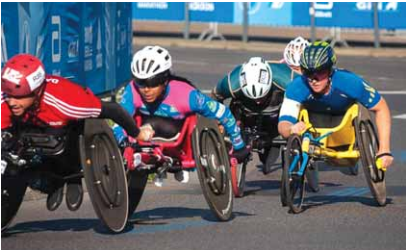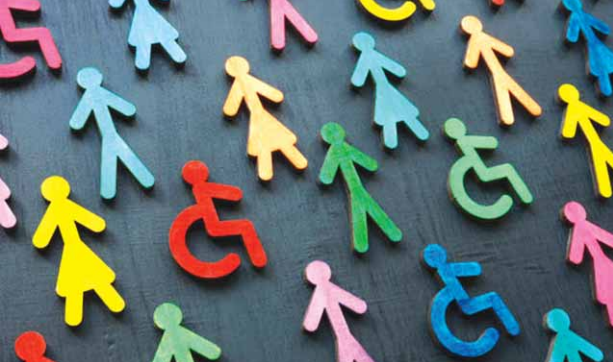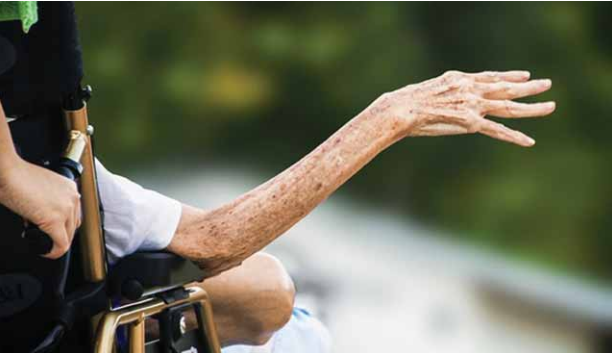Rutuj Mahendra Salunke is a dedicated disaster management professional with a Master’s degree in Disaster Management from the Tata Institute of Social Sciences (TISS). With extensive field experience in both urban and rural settings, he specializes in disaster risk reduction and resilience. Currently working as an assistant editor for Know Disasters Magazine, Rutuj contributes his expertise in content creation, editing, and disaster-related journalism.

When disaster strikes, the right to safety and protection should be universal — yet, for persons with disabilities, these rights are often overlooked in both planning and response. Across the globe, nations are grappling with the need to create legal frameworks that safeguard the lives and dignity of persons with disabilities during emergencies.
In India, where diverse geographies and frequent natural disasters pose unique challenges, the legal landscape is slowly evolving to address these gaps. From international commitments like the UN Convention on the Rights of Persons with Disabilities (CRPD) to India’s own Rights of Persons with Disabilities Act, this article examines the policies shaping inclusive disaster management. Are these laws enough? And how do they translate into action when crisis hits? Let’s navigate the complex terrain where policy meets preparedness, ensuring that inclusion is not just an afterthought — but a right.
Introduction
Disasters do not discriminate—but societal systems often do. For the 1.3 billion people with disabilities worldwide, the absence of inclusive legal frameworks in disaster management can turn natural hazards into human catastrophes. In India, where 2.2% of the population (26.8 million people) lives with disabilities, the collision of climate change, socio-economic disparities, and systemic neglect amplifies risks. This article delves into the intricate web of international and national laws governing disability-inclusive disaster preparedness, interrogating their promises, pitfalls, and the chasm between legislation and lived reality. Through expert insights, case studies, and comparative global analysis, we unravel why legal frameworks remain both a beacon of hope and a mirror to persistent inequities.
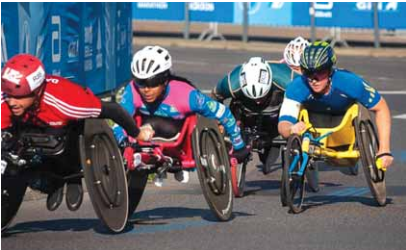
I. The Global Blueprint: International Laws and Frameworks
1. United Nations Convention on the Rights of Persons with Disabilities (CRPD, 2006)
The CRPD is the cornerstone of disability rights, with Article 11 mandating that states ensure the protection and safety of persons with disabilities (PwDs) in emergencies. It requires their active participation in disaster planning and obligates governments to provide accessible information and infrastructure. Article 9 further emphasizes accessibility, requiring nations to eliminate barriers in physical environments and communication systems.
Expert Commentary
Dr. Nilika Mehrotra, a sociologist and disability rights scholar, notes, “The CRPD’s strength lies in its recognition of PwDs as rights-holders, not passive beneficiaries. Yet, its enforcement relies on voluntary state compliance, which is often half-hearted in the Global South.”
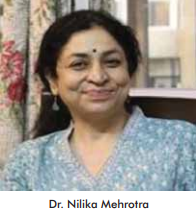
2. Sendai Framework for Disaster Risk Reduction (2015–2030)
The Sendai Framework explicitly prioritizes “inclusive, accessible, and non-discriminatory” disaster strategies. It calls for disaggregated data collection by disability, age, and gender to ensure targeted interventions. However, critics argue that its non-binding nature allows nations to sidestep accountability.
3. Sustainable Development Goals (SDGs)
While SDG 11 (Sustainable Cities) and SDG 13 (Climate Action) emphasize resilience, they lack specific mechanisms to enforce disability inclusion. A 2021 report by the International Disability Alliance found that only 20% of countries reference PwDs in their SDG implementation plans.
Case Study: Japan’s Binding Standards
Japan’s Basic Act on Disaster Management (2013) legally mandates accessible evacuation routes, shelters with ramps and tactile guides, and training for responders. Non-compliance triggers penalties, ensuring accountability—a model Global South nations could adapt.
II. India’s Legal Arsenal: Progress on Paper
1. Rights of Persons with Disabilities Act (RPWD), 2016
• Section 8: Guarantees equal protection and safety during disasters.
• Section 41: Requires authorities to disseminate disaster warnings in accessible formats (braille, sign language, simple language).
• Section 44: Mandates accessibility in public infrastructure, including shelters.
2. Disaster Management Act (2005)
While the Act established the National Disaster Management Authority (NDMA), it glaringly omits disability-specific provisions. However, NDMA’s 2016 Guidelines on Disability-Inclusive Disaster Risk Reduction fill this gap by urging states to:
• Map and register PwDs in vulnerable zones.
• Train disaster responders in inclusive techniques.
• Design shelters with ramps, tactile paths, and accessible toilets.
3. National Policy on Disaster Management (2009, revised 2020)
The 2020 revision references CRPD principles but lacks actionable timelines, budgets, or penalties for non-compliance.

Case Study: Kerala’s Mixed Progress
During the 2018 floods, Kerala’s government collaborated with NGOs to evacuate 12,000 PwDs using geo-tagged data. However, a 2022 audit revealed that only 30% of post-flood shelters were wheelchair-accessible, underscoring the gap between policy and implementation.
III. Gaps in the Framework: Where Laws Fall Short
1. Non-Binding Guidelines
NDMA’s 2016 guidelines remain advisory, not legally enforceable. States like Bihar and Uttar Pradesh lack localized disability-inclusive plans, leaving PwDs at the mercy of ad-hoc measures.
2. Data Deficiency
India’s disability data is outdated (2011 Census) and unreliable. A 2023 study by the National Centre for Promotion of Employment for Disabled People (NCPEDP) found that 60% of rural PwDs are unregistered, rendering them invisible in disaster planning.
3. Intersectional Exclusion
Laws overlook how caste, gender, and poverty compound risks. In Odisha’s tribal districts, women with disabilities are 4x less likely to reach shelters due to lack of transportation and stigma.
4. Accountability Vacuum
“There’s no legal recourse if a state ignores NDMA guidelines. Who’s responsible when a blind person can’t access a cyclone shelter?” asks Jayna Kothari, a senior advocate at the Supreme Court of India.
IV. Enforcement Hurdles: The Chasm Between Law and Reality
1. Capacity Gaps
Only 12% of India’s disaster management cells have staff trained in disability inclusion (NIDM, 2022). In Assam, flood responders admitted to lacking knowledge of evacuating PwDs during a 2023 workshop.
2. Funding Shortfalls
NDMA’s guidelines lack dedicated budgets. For instance, Tamil Nadu’s 2021 proposal to retrofit 500 shelters with ramps was shelved due to fund reallocation to “higher-priority” projects.
3. Token Participation
PwDs are rarely included in planning. “We’re invited to meetings as checkboxes, not contributors,” says Arman Ali, Executive Director of the National Centre for Promotion of Employment for Disabled People (NCPEDP).
V. Case Studies: Legal Battles and Grassroots Triumphs
1. 2023 Himachal Pradesh Floods: A Legal Wake-Up Call
When landslides stranded hundreds of PwDs in Himachal’s Kinnaur district, activists petitioned the High Court to enforce NDMA guidelines. The court ordered immediate, including airlifting 22 individuals with mobility disabilities. While a victory, it highlighted systemic failures—none of the state’s disaster plans mentioned PwDs.
2. Odisha’s Inclusive Cyclone Preparedness
Odisha’s 2019 Cyclone Fani response set a benchmark:
• Pre-Mapped Registries: 45,000 PwDs identified in coastal districts.
• Community Volunteers: 10,000 trained to assist PwDs during evacuations.
• Accessible Warnings: Radio alerts with sign language interpreters.
Result: Zero deaths among registered PwDs.
VI. Global Lessons: What India Can Learn
1. United States: ADA Compliance
The Americans with Disabilities Act (ADA) requires emergency services to accommodate PwDs. After Hurricane Katrina (2005), the U.S. mandated accessible evacuation buses and shelters, enforced through federal audits.
2. Philippines: Grassroots Empowerment
The Philippines’ National Disaster Risk Reduction and Management Act (2010) mandates barangays (villages) to include PwDs in local councils. During Typhoon Haiyan (2013), PwDs led community evacuations using pre-identified safe routes.
3. New Zealand: Co-Designed Solutions
New Zealand’s Disability Inclusive Disaster Risk Reduction Strategy (2022) was co-designed with PwDs, ensuring tailored alerts (e.g., vibrating pillows for the deaf) and mobile rescue teams.
VII. The Road Ahead: Expert Recommendations
1. Legislate, Don’t Suggest
Amend the Disaster Management Act (2005) to codify NDMA guidelines into binding law. Kerala’s 2023 draft bill proposing penalties for non-compliance offers a template.
2. Localize Registries
Empower Panchayats to maintain real-time data on PwDs, leveraging Aadhaar-Provided byed disability IDs for targeted.
3. Fund Inclusion
Allocate 5% of disaster management budgets to accessible infrastructure, as recommended by the UN Office for Disaster Risk Reduction (UNDRR).
4. Intersectional Training
Train responders on caste-gender-disability dynamics. Assam’s collaboration with feminist disability collectives in flood drills reduced evacuation gaps by 40% (2022).
5. Accountability Mechanisms
Establish grievance redressal cells under NDMA and state authorities, as piloted in Tamil Nadu’s Cuddalore district.
6. Leverage Technology
Scale up innovations like SAMBHAV (NIDM’s app with GPS-based evacuation routes) and AI-driven voice assistants for real-time alerts.
VIII. Conclusion: From Rhetoric to Rights Disability-inclusive disaster laws are not about charity—they are about justice. As climate change intensifies, India’s commitment to translating legal rhetoric into action will determine whether millions are left in the rubble or lifted from it. The path forward demands political courage, community-led innovation, and an unflinching belief that resilience is inseparable from inclusion.


